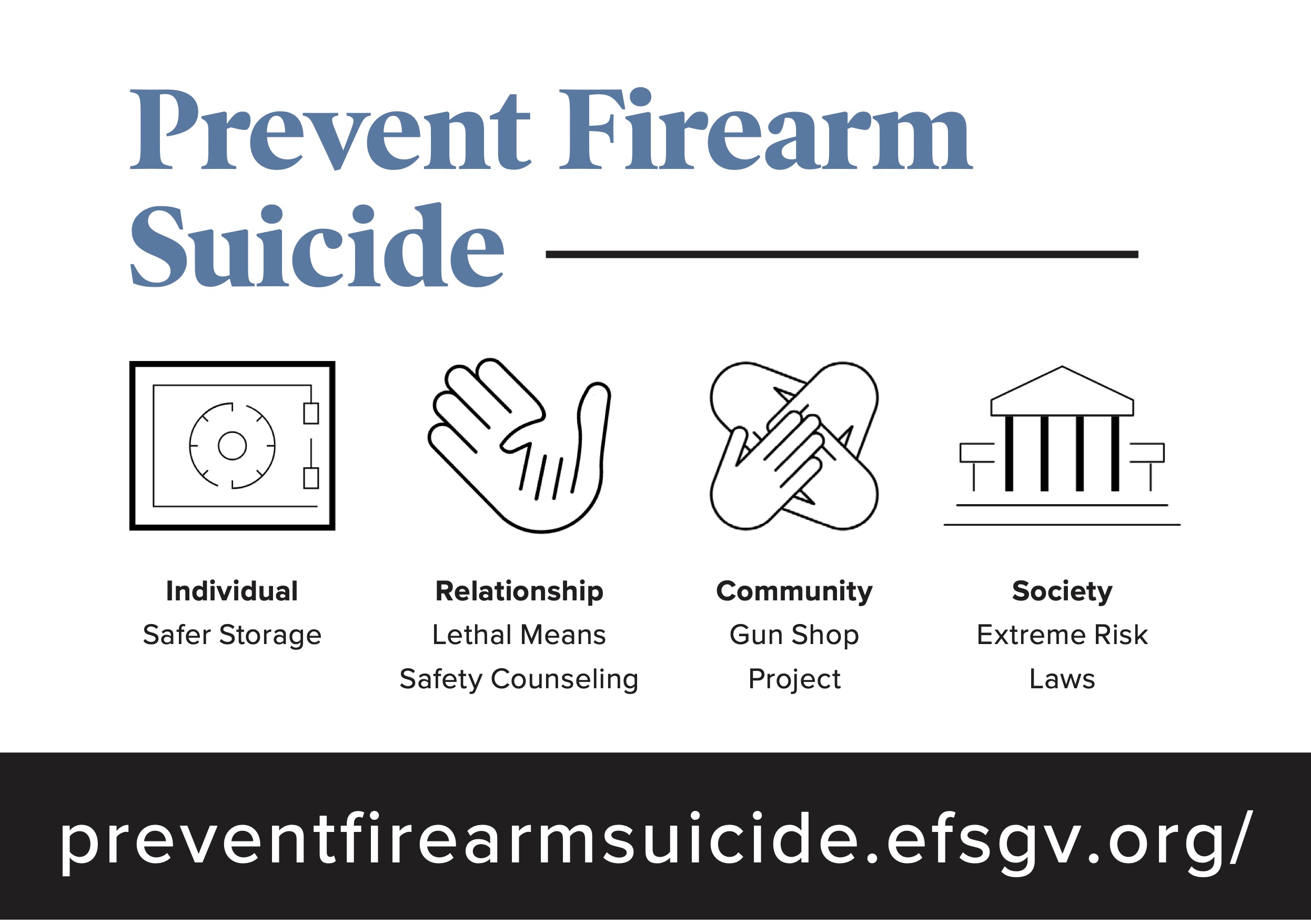National Suicide Prevention Awareness Month comes every September – but not every September comes in the midst of a global pandemic. Not every September comes at a time of unprecedented job loss and housing insecurity, extraordinary levels of anxiety and isolation, and increased dependency on alcohol and other substances. And thankfully, not every Suicide Prevention Awareness Month comes with all of that and a sharp uptick in firearm purchases.
Gun sales typically increase in troubled times, and our country’s current troubles aren’t hard to see. Out of the public eye, however, is another, largely hidden health crisis that’s been raging since long before the COVID-19 pandemic emerged: Firearm suicide. Together, these crises present a uniquely urgent challenge, one that we dare not lose sight of.
Over the past decade, the U.S. has seen a steady rise in deaths by gun suicide, the majority of which were carried out with firearms; in 2018, the most recent year for which the CDC has data, this country saw over 24,000 deaths by firearm suicide.
We don’t yet have figures for deaths by suicide since the emergence of the novel coronavirus, but we do know that in the midst of the pandemic, the CDC reported that 40% of adults said they were struggling with mental health or risky substance use issues as a direct result of the pandemic. We also know that the National Shooting Sports Foundation found that June 2020 gun sales represented a 135.7% increase as compared to June 2019.
Risk factors for suicide have increased since the start of the year, from social isolation, to the fear and reality of living with a life-threatening illness, to access to firearms – and studies show that 90 percent of suicide attempts that involve a firearm are fatal — thereby representing the most lethal form of suicidal act.
Under such difficult circumstances, what can we do, other than raise awareness and check in with our loved ones, to actively keep each other safe? We know that the single most powerful tool at our disposal is reducing access to lethal means – making sure that someone experiencing suicidal thoughts cannot easily put their hands on a gun – but how can we make that happen?
It begins with safer storage. Anyone who owns a firearm and stores it in their home should store that weapon locked, unloaded and separate from ammunition. If someone in the home is at risk of suicide, it’s vital that all keys or lock combinations be inaccessible to that person – better still, those firearms would be stored outside the home altogether.
With many gun stores open and firearm sales growing, it’s imperative that store owners display firearm suicide prevention materials both prominently and discretely, so that customers can easily see them, and easily take what they need. This may mean placing these materials at the cash register as well as in the aisles and public bathrooms, and also including them in the bags shoppers use to carry their purchases home. We should approach gun violence in the same way we approach informing people publicly about the risks of cigarettes, where the dangers are clearly presented on the boxes of the products themselves.
We must also increase access to “lethal means safety counseling,” in which health care providers help patients and loved ones find ways to reduce access to firearms, if only temporarily, during times of elevated risk of suicide. As many people turn to telehealth appointments, it’s important that providers screen for suicidal ideation and engage in lethal means safety counseling wherever appropriate.
And lastly, we must increase awareness of and enforce existing extreme risk protection laws. Such orders temporarily prohibit the purchase and possession of firearms and/or require the removal of firearms from individuals at risk of suicide; states and localities must provide explicit guidance on how to obtain an extreme risk protection order; local law enforcement and courts can provide further direction. Nineteen states and the District of Columbia have extreme risk laws; we must also do what we can to expand their scope across the United States.
The American people are living through exceptionally difficult days; ensuring that a struggling individual doesn’t have easy access to a firearm during this crisis could mean the difference between life and death. I know this from personal experience – 10 years ago, I survived a suicide attempt; if I’d had access to a gun, I very well might not have.
There are no easy answers to the pain and suffering that so many are facing, and on exceptionally hard days, it can feel that there’s only one solution. By making it harder to access firearms, we’ll be ensuring that more of our fellow Americans, more of our loved ones, are able to overcome a suicidal crisis and remain here with us, to help build a better tomorrow.
Dakota Jablon is suicide prevention specialist at the Educational Fund to Stop Gun Violence and director of federal affairs at the Coalition to Stop Gun Violence.


